Modern workers often see open office plans and coworking spaces as excellent collaborative environments, where they can work with, rather than next to, their coworkers.
The assumption that open offices are positive, collaborative environments is based on the supposition that open offices provide a space where people can be creative, and innovative.
That sounds wonderful.
Unfortunately, in practice, it doesn't often work. Most open offices foster a less-than-ideal work environment for employees. More often than not, the open office concept reduces productivity, increases the number of sick days workers take, and increases employee feelings of anxiety.
Unless you design your open office correctly, the disadvantages of open offices may very well outweigh the benefits.

In the coming months and years, small businesses will take less of an all-or-nothing approach to the question of cubicles or none and will adopt a fusion of the two styles influenced by the type of work being completed.
I like to call this concept "function-dependent office design."
In this article, we'll examine some of the latest research about office environments, the pros and cons of open offices, and how to be successful with your function-dependent office design.
Read on to learn how to create the best open office plan for your small business.
Balancing open office designs and employee satisfaction
According to research conducted by Gartner in 2017, only 9% of 849 employees who were assigned private offices were less than satisfied with the physical workspace their organization provided them (full research available to Gartner clients).
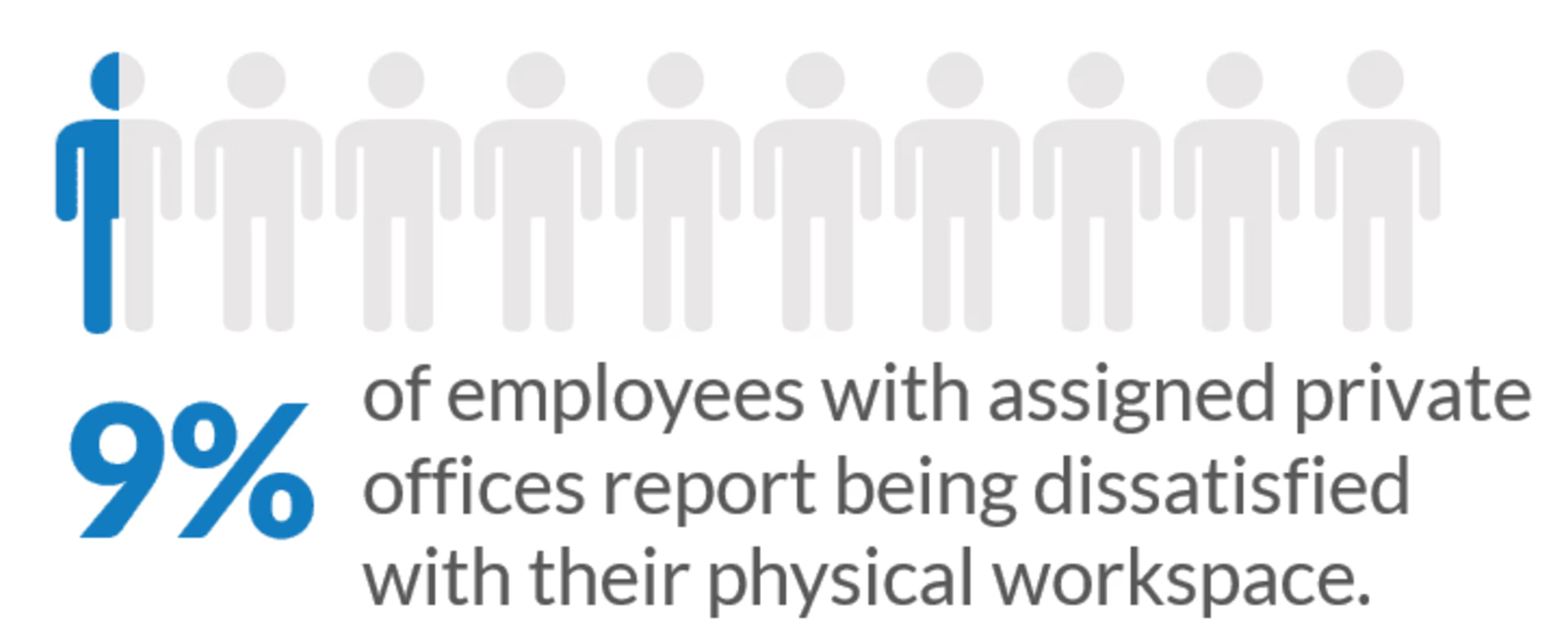
That's a lot lower than the 25% of 554 respondents who were less than satisfied with their assigned workspaces in open-plan offices with no walls.
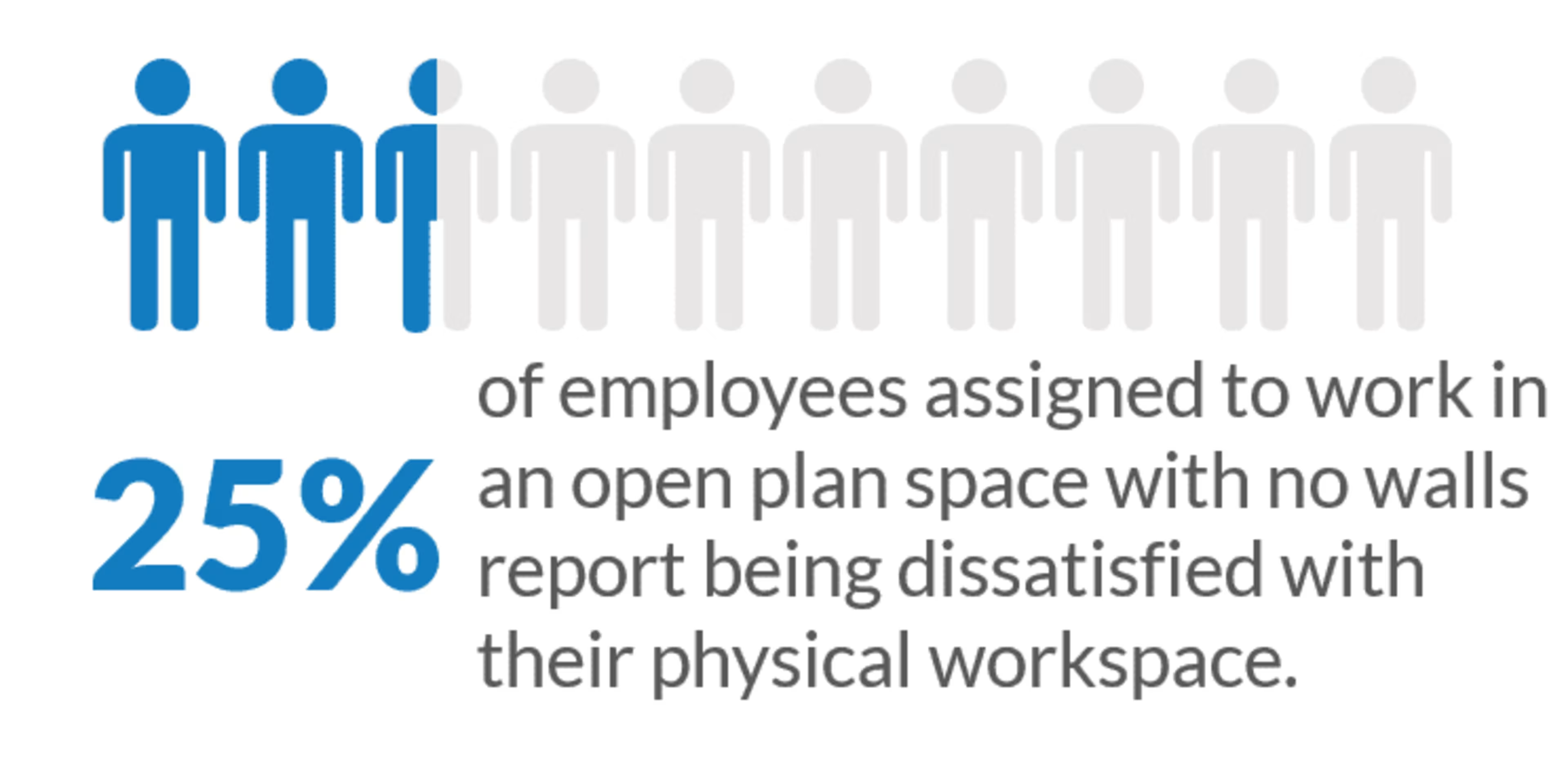
Open office spaces have been a source of debate over the past few decades as supporters advocate their cost-saving setup and collaboration-fostering environment, while detractors cite their harm to productivity and employee health.
The above statistics indicate that although businesses are moving toward a more relaxed, open-office setting, employees are not necessarily satisfied with how it's working (or not working) out.
What are the benefits of open offices?
1. They're cheap to set up
That's right, Millennials and Gen Zers, your employer might be trumpeting a collaborative culture, but ultimately they're saving big bucks by having you stare directly into the eyes of the coworker seated across from you.
At least in the short term.
If you control for all other costs associated with creating an office space, buying 50 adjustable standing desks is cheaper than purchasing 50 cubicles.
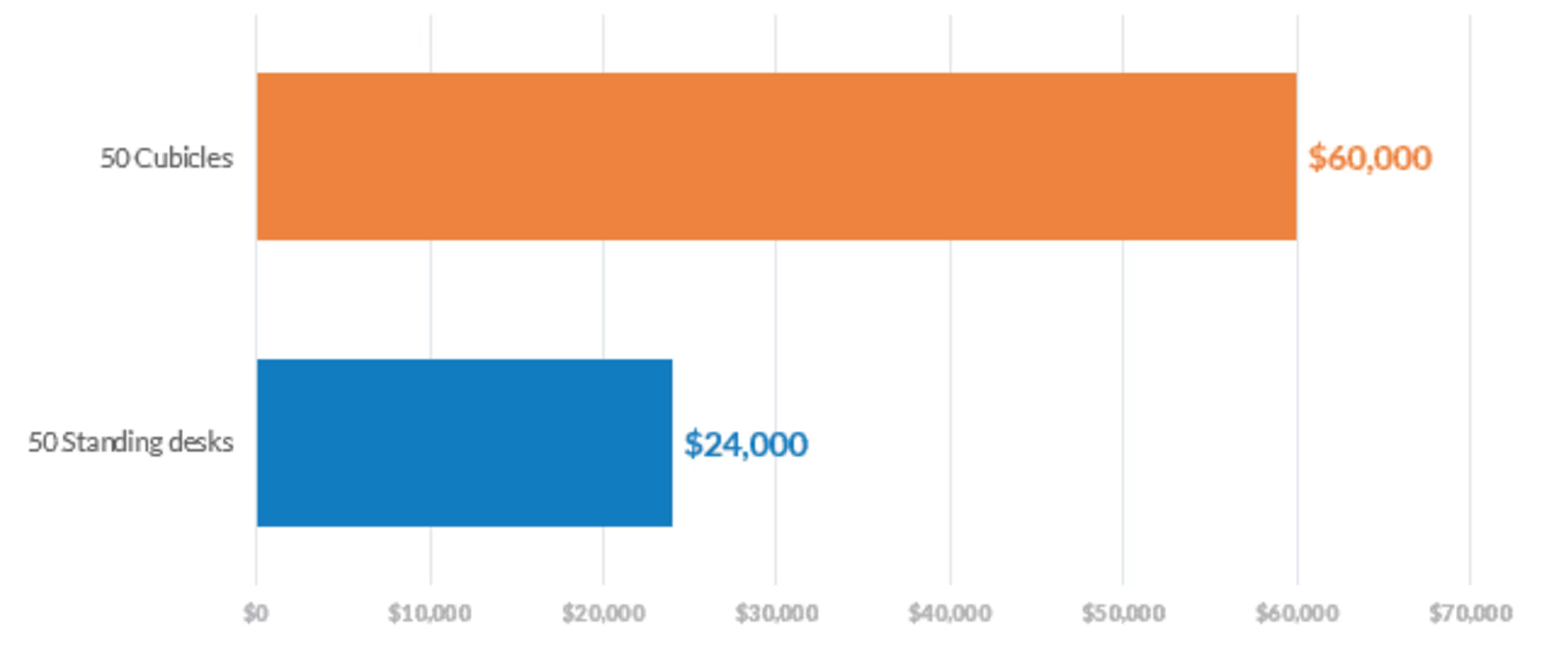
Initial investment approximation between 50 cubicles and 50 standing desks. Pricing data gathered from Office Interiors and StandDesk quotes in June 2018.
2. They discourage secrets
Perhaps journalist Jena McGregor said it best in her Washington Post article aptly titled "Why open plan offices are like a nudist beach."
Open offices allow everything to be out in the open for inspection, for better or for worse.
A positive aspect of an open office is that you can hear about projects that other teams are working on and easily collaborate with teammates sitting near you.
Unfortunately, that also means you get to hear about how much your coworker loves avocado toast. Work life is full of give and take.
Jokes aside: Breaking down the physical barriers in your office can foster a more open culture that values innovation and camaraderie.
3. They encourage collaboration
Open offices let employees who have different job functions work next to and (hopefully) learn from one another.
One technique that many open office plan businesses use is shifting seating arrangements every few months to expose employees to other teams and management members. This can foster a feeling of being "heard" by management and recognized for individual accomplishments, and encourages employees to work together across teams.
"Colleagues can turn to each other for advice or assistance without having to knock on doors or schedule a formal meeting," says Shari Parsons Miller from Small Business Chron.
What are the disadvantages of open offices?
1. Distractions that sabotage employee efficiency and productivity
Scientists have known since 1980 that there is a positive correlation between architectural and psychological privacy and job performance and satisfaction.
According to a more recent study conducted by Jungsoo Kim and Richard de Dear for The Journal of Environmental Psychology:
The "benefits of enhanced 'ease of interaction' were smaller than the penalties of increased noise level and decreased privacy resulting from open-plan office configuration."
In other words: The payoff from providing collaborative spaces did not offset the negative environmental factors that affected employees.
You can give your employees a set of headphones or provide a white noise machine to block out the noise, but too often the visual pollution that also distracts your workers is overlooked.
Your employees look up and break concentration every time someone walks past their desk, gets up from their chair, stretches, congregates at the desk next to them to collaborate...the list is almost endless.
2. Potential harm to employee health
The most recent research published on employee absenteeism in open office design reports that workers in open environments take 62% more sick leave than employees in more private workspaces.
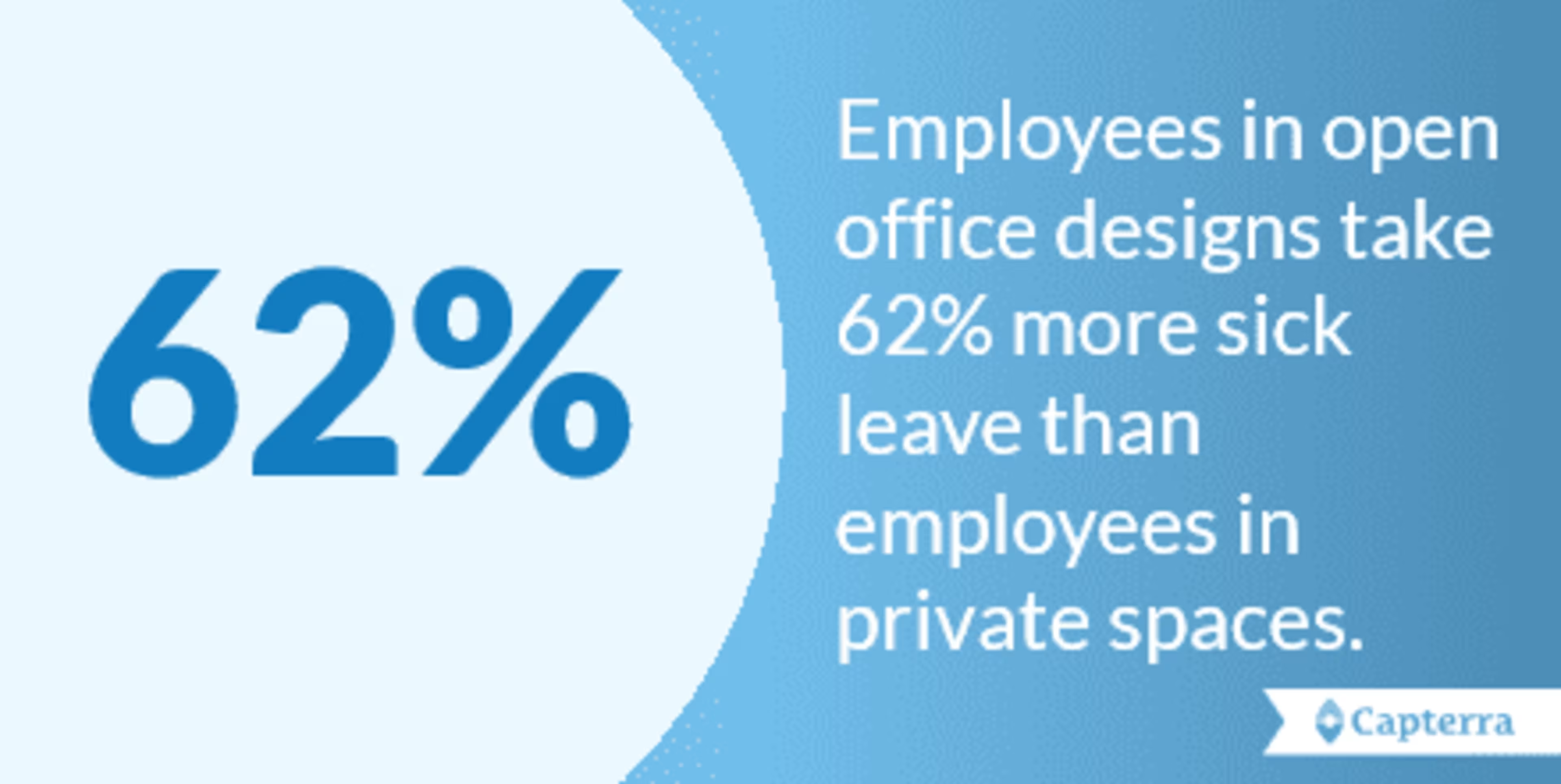
A new study published in the Scandinavian Journal of Work, Environment & Health concluded that there is "a negative relationship between the number of co-workers sharing an office and employees' job satisfaction."
A study conducted by the same authors in 2016 "showed that higher workspace density was associated with higher psychosocial work stressors and environmental dissatisfaction, which, in turn, were associated with poorer physical health, emotional and cognitive irritation, and lower mental work ability."
And the number of people at work isn't the only problem; all of those people generate noise.
Researchers Haapakangas, Hongisto, Varjo, and Lahitnen noted in The Journal of Environmental Psychology that increased distractions are a "central source of environmental stress" and "an increase in distractions may impair collaboration and increase stress symptoms."
Digging even deeper, irrelevant speech decreases employees' cognitive performance, according to Yadav, Kim, Cabrera, and de Dear's research published in Applied Acoustics.
What does all this research mean for open offices?
While working, the more people your employees observe in their periphery leads to distractions. These distractions have a negative impact on worker's levels of stress, satisfaction, physical health, and cognitive performance.
3. Higher costs in the long run
"Open plan offices may have short-term financial benefits, but these benefits may be lower than the costs associated with decreased job satisfaction and well-being," according to Otterbring, Pareigis, Wastlund, et al.
Steelcase research found that open office employees lose 86 minutes a day to distractions.
Let's do the math:
If an employee is paid $50,000 annually to work a traditional 40-hour work week and you're losing 86 minutes each day to distraction created by an open office, you're paying for almost an entire day of work each week that you're not getting. You're paying approximately $344 every two weeks to that employee; that's $8,944 a year before taxes.
This calculation simplifies the problem, but the message is clear: Open offices lose money because employees are taking more sick days and are not working effectively while they're in office.
Go with function dependent office design instead
So, what can you do to avoid these cons and foster an efficient, productive office?
The perfect office is a mixture of private spaces to concentrate and open areas that allow collaboration. If you're not an office environment alchemist, it's difficult to know which mix is right for your small business. You need to take on the role of organizational psychologist and architect at once.
To create a successful iteration of a function dependent office, you'll need the following:
A workplace audit to determine the products that are being delivered and the best environment in which to deliver those products.
A flexible workplace or remote work policy.
Quiet spaces.
1. Identify and group teams that have shared goals and work styles
It's normal to sit employees with common goals together.
Problems arise when you put two teams with different goals and communications styles next to each other in an open office setting.
Putting your sales team next to your research and development team, for example, is a recipe for disgruntled workers.
Identify the work styles and requirements for different teams, and group them accordingly. Teams that need quiet to write or code should be grouped, while teams that thrive in continuous collaboration environments—think marketing and sales—should occupy a different space if possible.
According to Gemma Irving, a postdoctoral research fellow at the University of Queensland, "The key is to match the environment to the interactions employees need to do their job."
2. Consider flexibility a part of the employee environment equation
Flexibility means one thing: Allowing employees to work where they get their best work finished.
That could be the office, home, or (less likely) a coffee shop.
According to a multinational Digital Workplaces study conducted by Gartner in 2017, 45% of respondents aged 18 to 25 reported having flexibility in choosing between different workspaces (e.g. open spaces versus private spaces; full research available to Gartner clients).
That means that at least some of the youngest generation of workers feel like they can work in the office or out, which means businesses are already moving in the right direction with their work policies. Mixing remote work into small business office work policy is the future.
That same segment of workers would rather split their time between their corporate office and home (~56% of 262 respondents aged 18 to 25 want to schedule the majority of their working hours in office, versus 23% who prefer working at home), rather than working while traveling or in public.
The same survey found that few people of any age segment want to work from a public place such as a cafe. A majority (63% of the 2,974 respondents) said that they'd schedule absolutely none of their time in a public space to work. What does this indicate? How much workers dislike interruptions unrelated to their work during the day.
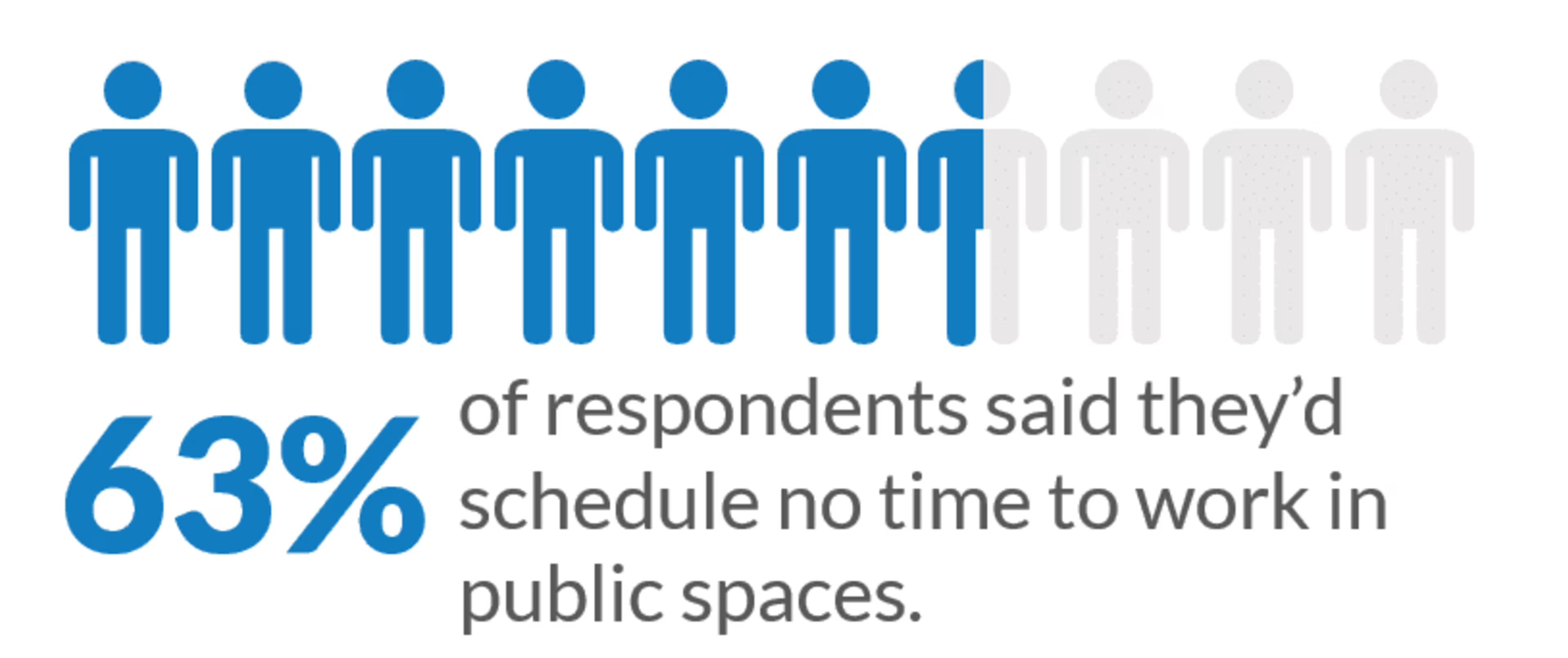
Don't be afraid that your employees will go rogue if you let them work remote. Gartner's research shows that if you give the option of flexible workspaces to your staff, they'll be in the office more than half of the time by choice.
3. Factor in the need for quiet workspaces
As previously mentioned, research published in the Journal of Environmental Psychology states:
"Quiet workspaces, and the perceived ease of access to them, are associated with environmental perceptions, perceived collaboration and employee stress in open-plan offices."
Employees with the option to retreat to a quiet space to work show an increase in their positive perception of their work environment.
Remember: Quiet spaces mean spaces devoid of sound. Research shows that the "babble" created by four people isn't enough to provide beneficial sound masking and that hearing one person speaking is the most disruptive.
Make sure you have sufficient quiet spaces in your office so employees don't have to fight over them, and if you don't have enough spaces to go around, allow for blocks of time to be scheduled in advance with time limits.
Remember: There is no one-size-fits-all office design
The U.S. workforce is going through a Goldilocks-style testing period after the destruction of the 1960s cubicle farm. Workers have decided that completely closed off offices are too depressing and create silos, while entirely open offices are too distracting and damage productivity.
Business owners need to find their "just right," which is entirely subjective.
Avoid allowing the rubber band to snap back to either end of the spectrum, and adopt a more flexible function dependent office that compliments your team's production styles.
Interested in more tips and trends for small businesses? Check out these articles: